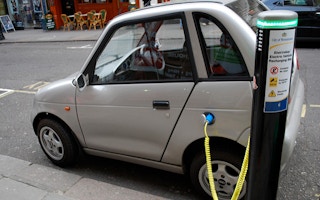The Paris Agreement adopted in 2015 was lauded as a turning point in the global fight against climate change. The question today is: Are countries responding to it?
The short answer is yes. Based on our review of major national announcements over the last 12 months, it’s clear that countries are ramping up their climate efforts, from setting bolder emission-reduction targets and protecting forests to phasing out coal-fired power plants. These are key foundation stones as countries, along with businesses, cities and states, prepare to enhance their ambition by 2020 to keep the world on track to meet the Paris Agreement goals of limiting warming to 1.5-2°C (2.7-3.6° F).
-
Bolder plans to reach net-zero emissions
New Zealand’s new prime minister committed to net zero by 2050—a target that looks on track to be enshrined in a new national climate law. And in a submission to the UN, the United Kingdom indicated it would need to legislate for a net-zero emissions target to provide legal certainty on where the country is heading. Claire Perry, minister of state at the Department for Business, Energy and Industry Strategy, also said the independent Committee on Climate Change (CCC) would be instructed to advise on how the UK’s long-term climate goals could meet the Paris Agreement goal of limiting temperature rise to 1.5° C.
-
Phasing out fossil-fuel vehicles
Over the last year, France, United Kingdom, China, Ireland, Scotland, Israel and Costa Rica all came forward with announcements or plans to ban the sale of fossil fuel-powered vehicles, many of them by 2040. The most ambitious commitment came from Ireland, with its plan for selling only zero-emission vehicles after 2030. Others, including India and Germany, indicated that they have similar aspirations. While these commitments are in part a reflection of market trends, they also send a clear signal to manufacturers, which could accelerate the transition to electric vehicles.
“
The task now is to back them up with action, translating high-level goals into the domestic legislation and regulations that will put them into practice.
-
Phasing out coal
To meet the Paris Agreement goals of limiting global temperature rise to 1.5-2°C, analysis shows the OECD and Europe will need to phase out coal no later than 2030; the rest of the world will need to follow suit no later than 2050. Through the Powering Past Coal Alliance, which launched in December 2017, more than 20 countries have committed to phase out existing coal plants and establish a moratorium on any new coal stations unless they’re equipped with carbon capture and storage. Led by the United Kingdom and Canada and including Finland, Denmark, Mexico and Angola, among others, this alliance also includes businesses and sub-national governments.
-
Banning oil drilling
Last December, the French Parliament approved a plan making it illegal to produce or explore for oil and gas in France or its overseas territories. Existing drilling permits will expire by 2040. Four months later, New Zealand’s Prime Minister Jacinda Ardern announced her country would also ban all new offshore oil exploration by 2040 as part of the country’s “carbon-neutral future.”
-
Protecting forests
When China pledged to scale up its efforts to restore forests, it went big. The country committed to plant 6.6 million hectares (16 million acres) of forest in 2018, an area roughly the size of Ireland. This is in line with China’s effort to raise the total per cent of its forests from 21.7 per cent to 23 per cent of total land area by 2020, and 26 per cent by 2030.
Countries took good steps forward this past year—now it’s time for bolder action. These announcements are pointing in the right direction, but it’s important to note that they’re still just intentions to act. The task now is to back them up with action, translating high-level goals into the domestic legislation and regulations that will put them into practice. And all countries will need to start preparing for much greater ambition as they craft their next round of national climate plans under the Paris Agreement, which should be released by 2020.
The next two signs of progress go beyond commitments into action. Other countries should take inspiration from these early leaders.
-
Revising national laws to align with the Paris Agreement
Sweden and Mexico are taking the right steps to align their national laws and regulations with the scale and urgency reflected in the Paris Agreement.
In June 2017, Sweden amended its Climate Change Law to mandate it reach net-zero emissions by 2045. The amendment enshrines into domestic law a more ambitious target than is currently in Sweden’s Nationally Determined Contribution.
Earlier this year, Mexico updated its General Law on Climate Change to make it compatible with the Paris Agreement - including the goal of limiting the increase in the average temperature of the planet to less than 2°C (25.6°F), with efforts to limit it to 1.5°C (34.7°F). The reforms included a requirement to review emission-reduction targets every five years, bringing a key component of the Paris Agreement into binding law. The amendments also require the establishment of a mandatory emissions-trading scheme.
-
National processes to identify opportunities to enhance NDCs
In March this year, Chile concluded a six-month series of dialogues across government to review its national climate plan (known as a Nationally Determined Contribution, or NDC) and identify opportunities to enhance it. Responding to the many changes that have taken place since the NDC was first developed in 2015, a working group including representatives from 10 government agencies aimed to identify elements that could be revised or updated before 2020. The dialogue was structured around six sessions, each focusing on a different component of Chile’s NDC. The working group, led by the Ministry for Environment’s climate change office, may convene further dialogues to include a broader range of stakeholders.
Convening such dialogues is a critical first step for identifying where a country can go further with its climate action and ensuring alignment between its domestic policies and its NDC. All countries should consider initiating similar processes over the coming year with a view to updating their NDCs by 2020.
Bolder action still required
These national efforts complement progress this year at the international level. The Kigali Amendment, a global agreement to phase down potent hydrofluorocarbon gases (HFCs), entered into force, and the UN’s International Maritime Organisation (IMO) approved an agreement to cut emissions from shipping by at least 50 per cent by 2050 compared to 2008 levels. The IMO strategy also includes a specific reference to pursuing “a pathway of CO2 emissions reduction consistent with the Paris Agreement temperature goals.”
These achievements indicate a clear direction of travel—one that is firmly pointed towards a low-carbon future. How quickly we get there, and whether efforts are sufficient to bend the emissions trajectory enough to avoid the worst consequences of climate change, will depend on countries continuing to step up and enhance their ambition.
The Paris Agreement and other international signals, including the Talanoa Dialogue, can provide important momentum and help drive political will, especially as we head toward 2020 and countries make decisions to enhance their national climate plans and domestic policies and actions. Ultimately, the world’s success or failure in combating climate change will be determined not by commitments, but by concrete action at the national level, in partnership with businesses, provinces and cities.
Eliza Northrop is Associate II for the International Climate Initiative at the World Resources Institute. This post is republished from WRI blog.









